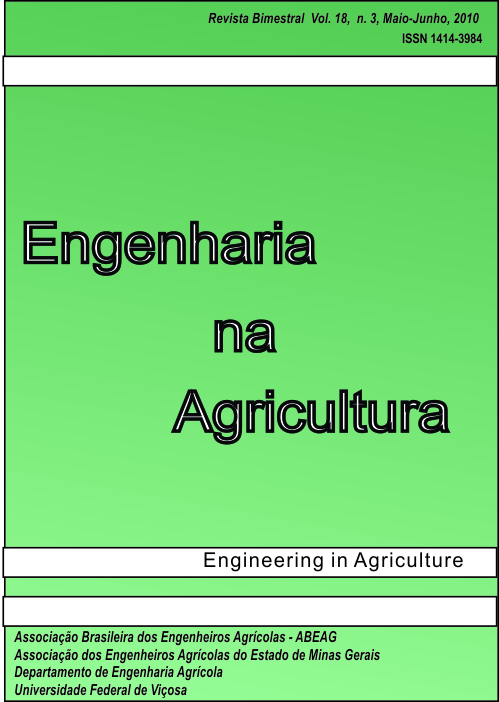CLASSIFICATION OF WATER FROM TUBULAR WELLS NORTH OF THE STATE OF MINAS GERAIS FOR IRRIGATION
DOI:
https://doi.org/10.13083/reveng.v18i3.114Keywords:
composição iônica, salinidade, qualidade da água, regressão linear múltipla.Abstract
The classification of water for irrigation purposes is usually based only on their individual levels ions or in its total salinity according to the electrical conductivity. Meanwhile, a classification that takes into account the relevance of each ion in solution in the electrical conductivity of the water, better explains the origin of its salinity. From physical-chemical characteristics of water tubular wells in the region of Janaúba and Jaíba, North of the state of Minas Gerais, was carried out a study of classification of the irrigation water and analysis of the contribution of ionic composition in total salinity, using multiple linear regression with selection for step by Stepwise method. Based on the average levels of Ca, Mg, and Cl the water of the region of Janaúba and Jaíba is indicated for use in irrigation, from using alternative management. The levels of Na in water alone do not offer risks of sodicidade. But the levels of HCO3 in the water higher than Ca and Mg, may interfere with the relationship of sodium adsorption. The water of the region is classified as a medium to high risk of salinization of the soil and can be used whenever there is a moderate degree of leaching and adequate drainage. Despite high levels of HCO3 in the water, the levels of Ca, Mg and Cl contribute in larger proportions in increasing the total salinity. The average values of osmotic potential estimated are an indicative of the need for use adequate of irrigation water.Downloads
Downloads
Published
How to Cite
Issue
Section
License
Authors who publish with this journal agree to the following terms:
The author(s) authorize(s) the publication of the text in the journal;
The author(s) ensure(s) that the contribution is original and unpublished and that it is not in the process of evaluation by another journal;
The journal is not responsible for the views, ideas and concepts presented in articles, and these are the sole responsibility of the author(s);
The publishers reserve the right to make textual adjustments and adapt texts to meet with publication standards.
From submission, the author is fully conceding the paper's patrimonial rights to the publication, but retaining the owner of its moral rights (authorship and paper's identification) according to Creative Commons Attribution-Noncommercial.








 Licensed by
Licensed by 